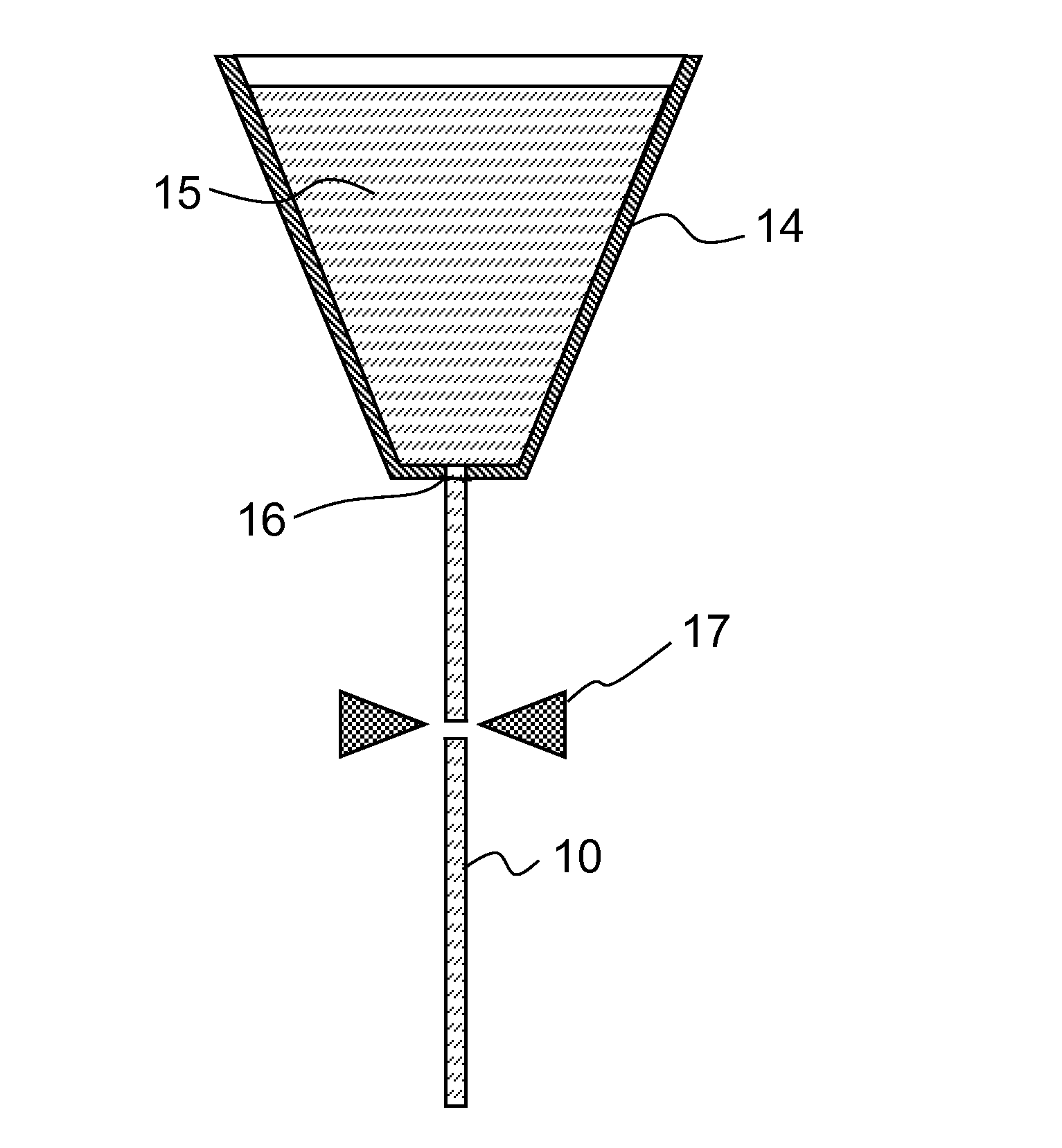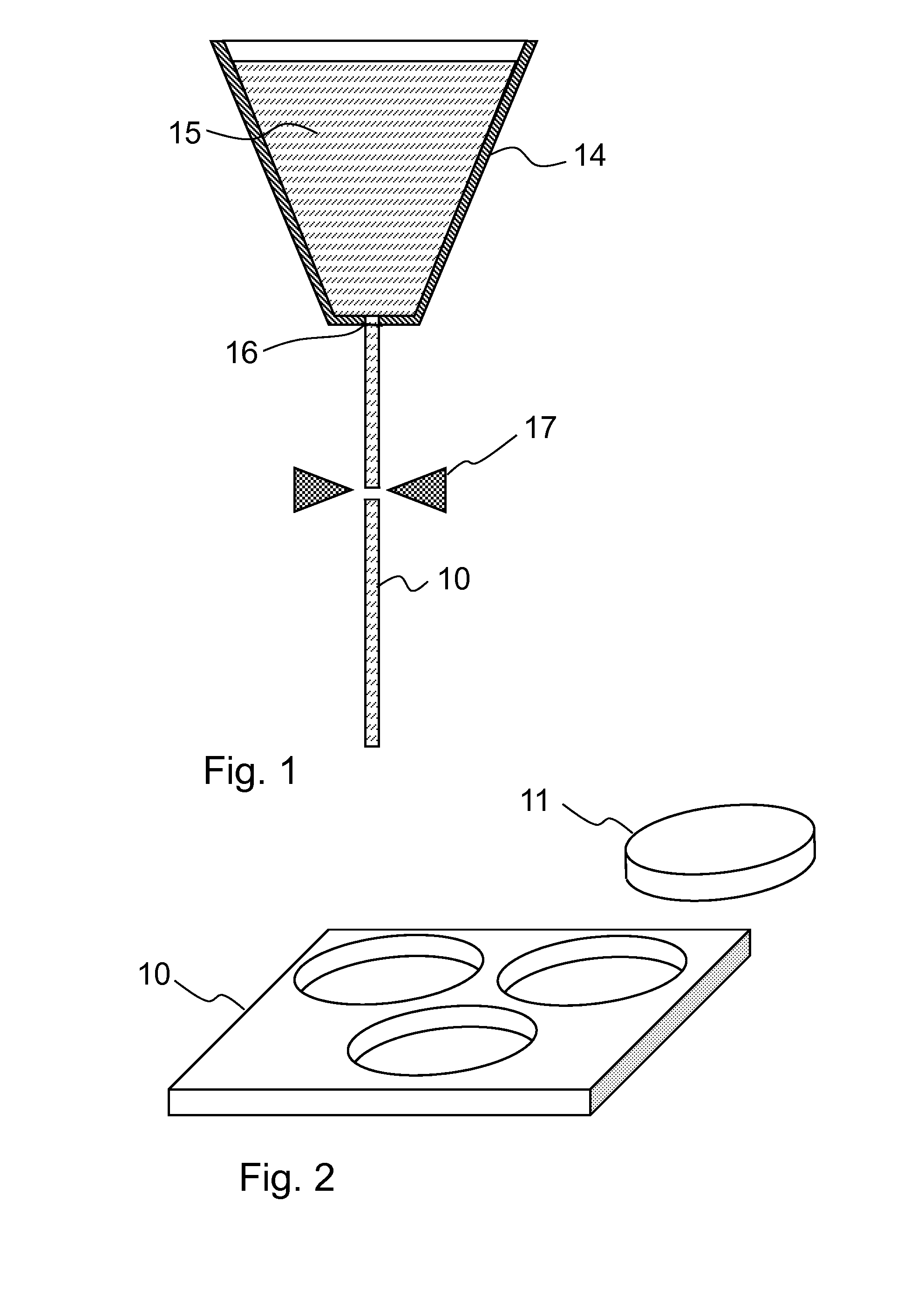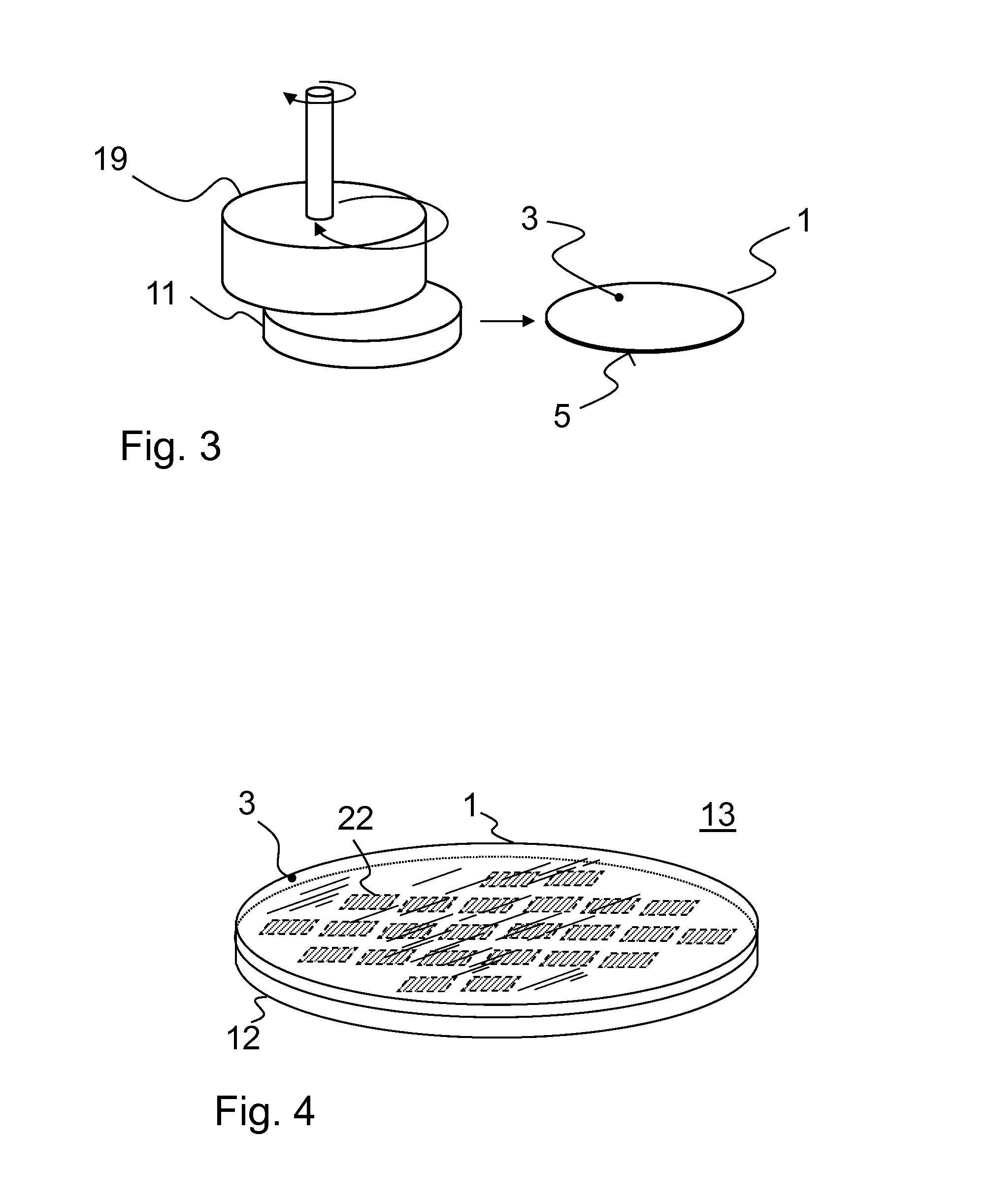Infrared absorbing glass wafer and method for producing same
a technology of infrared absorbing glass and glass wafers, which is applied in the field of glass wafers, can solve the problems of unfavorable cost-efficient manufacturing, color and brightness distortion, annoying ghost images in the optical system, etc., and achieve the effect of low curvatur
- Summary
- Abstract
- Description
- Claims
- Application Information
AI Technical Summary
Benefits of technology
Problems solved by technology
Method used
Image
Examples
Embodiment Construction
[0031]Referring to FIGS. 1, 2, and 3, the manufacturing of a glass wafer according to the invention will be described schematically. First, the molten glass from which the glass sheet is produced, is prepared by a preferably continuous melting process. FIG. 1 shows a crucible 14 having a slotted nozzle at its bottom. The crucible may be formed by the melting trough itself, or the fluorophosphate or phosphate glass melt 15 produced in the melting trough is filled into crucible 14. A strip of glass exiting from slotted nozzle 16 is separated into individual glass sheets 10 using a cutting tool 17. Accordingly, in this exemplary embodiment the glass sheets are manufactured in a so-called downdraw process. Alternatively, however, other processes are likewise possible, such as a float process or overflow fusion process.
[0032]The thus produced glass sheets 10 have a thickness of at least 1.8 millimeters, preferably from 1.8 to 3.2 millimeters, more preferably a thickness in a range from 2...
PUM
| Property | Measurement | Unit |
|---|---|---|
| thickness | aaaaa | aaaaa |
| diameter | aaaaa | aaaaa |
| length | aaaaa | aaaaa |
Abstract
Description
Claims
Application Information
 Login to View More
Login to View More - R&D
- Intellectual Property
- Life Sciences
- Materials
- Tech Scout
- Unparalleled Data Quality
- Higher Quality Content
- 60% Fewer Hallucinations
Browse by: Latest US Patents, China's latest patents, Technical Efficacy Thesaurus, Application Domain, Technology Topic, Popular Technical Reports.
© 2025 PatSnap. All rights reserved.Legal|Privacy policy|Modern Slavery Act Transparency Statement|Sitemap|About US| Contact US: help@patsnap.com



